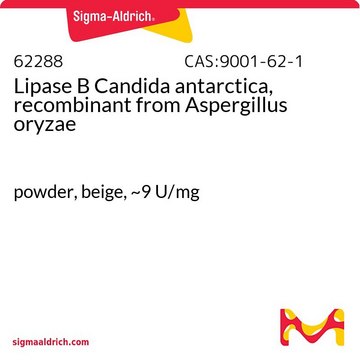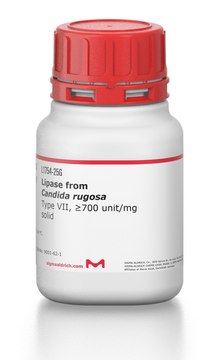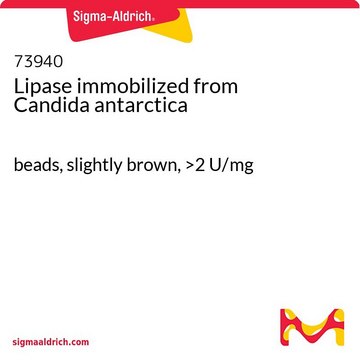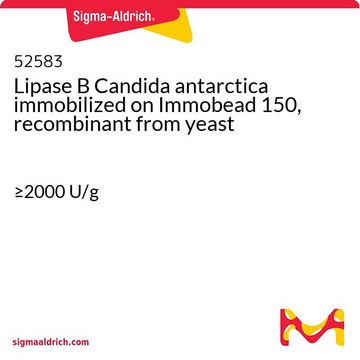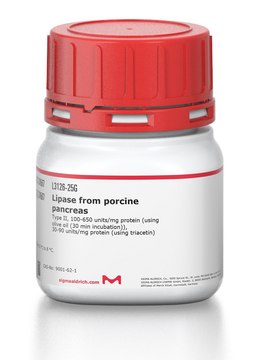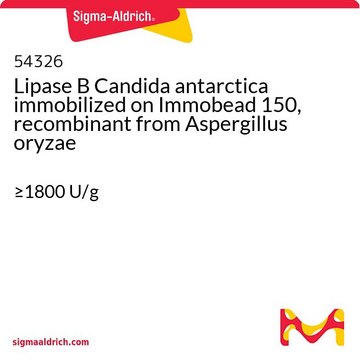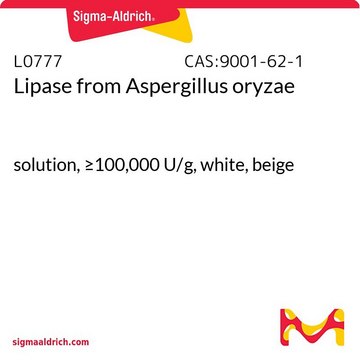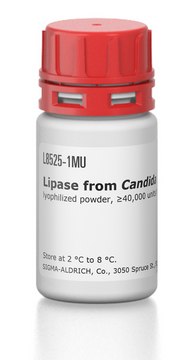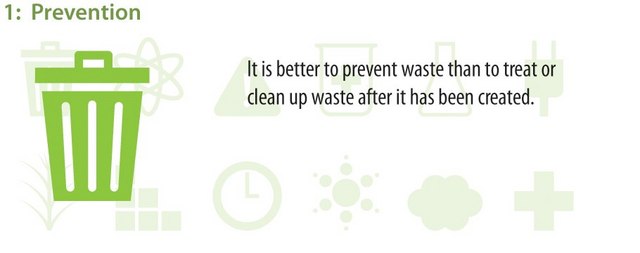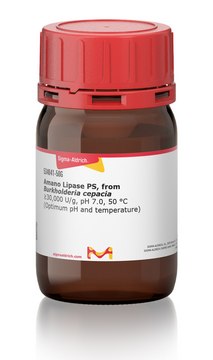推荐产品
重组
expressed in Aspergillus niger
质量水平
表单
solid
比活
≥5,000 U/g
环保替代产品特性
Waste Prevention
Design for Energy Efficiency
Learn more about the Principles of Green Chemistry.
sustainability
Greener Alternative Product
基质
macroporous acrylic resin
应用
diagnostic assay manufacturing
环保替代产品分类
储存温度
2-8°C
InChI
1S/C11H9N3O2.Na/c15-8-4-5-9(10(16)7-8)13-14-11-3-1-2-6-12-11;/h1-7,16H,(H,12,14);/q;+1/b13-9-;
InChI key
QWZUIMCIEOCSJF-CHHCPSLASA-N
相关类别
一般描述
应用
- 作为催化剂,用丁酸进行pLACT的酯化反应
- 作为添加剂,用于全氢化菜籽油(FHCO)和高油酸葵花籽油(HOSO)混合物,进行酶促酯交换
- 研究其对酯化时油酸转化程度的影响
生化/生理作用
其他说明
警示用语:
Danger
危险声明
预防措施声明
危险分类
Resp. Sens. 1
储存分类代码
11 - Combustible Solids
WGK
WGK 1
闪点(°F)
Not applicable
闪点(°C)
Not applicable
法规信息
从最新的版本中选择一种:
分析证书(COA)
Which document(s) contains shelf-life or expiration date information for a given product?
If available for a given product, the recommended re-test date or the expiration date can be found on the Certificate of Analysis.
How do I get lot-specific information or a Certificate of Analysis?
The lot specific COA document can be found by entering the lot number above under the "Documents" section.
How do I find price and availability?
There are several ways to find pricing and availability for our products. Once you log onto our website, you will find the price and availability displayed on the product detail page. You can contact any of our Customer Sales and Service offices to receive a quote. USA customers: 1-800-325-3010 or view local office numbers.
What solvents are most compatible with Product L4777, Lipase acrylic resin?
This resin works well in solvent-free reactions, as well as in inert water immiscible solvents such as petroleum ether, n-hexane and n-heptane. If the reaction being catalyzed is hydrolysis of an ester, addition of water to the reaction mix is recommended. For other reactions water is likely not required, and in some cases would actually be detrimental.
What is the substrate specificity of Product L4777, Lipase acrylic resin?
Lipase acrylic resin has a broad substrate specificity. It promotes reactions between a wide range of primary and secondary alcohols and carboxylic acids.
What are the components of Product L4777, Lipase acrylic resin, and what are the optimal recommended conditions?
This product consists of a thermostable lipase enzyme immobilized on a macroporous acrylic bead resin. The bead-shaped particles have a diameter in the range of 0.3-0.9 mm. The resin will be compatible with stearyl alcohol at temperatures of 40-60°C, which is the normal operating temperature of the enzyme. This immobilized enzyme can be used in hexane with no adverse effects.
What is the Department of Transportation shipping information for this product?
Transportation information can be found in Section 14 of the product's (M)SDS.To access the shipping information for this material, use the link on the product detail page for the product.
My question is not addressed here, how can I contact Technical Service for assistance?
Ask a Scientist here.
我们的科学家团队拥有各种研究领域经验,包括生命科学、材料科学、化学合成、色谱、分析及许多其他领域.
联系技术服务部门